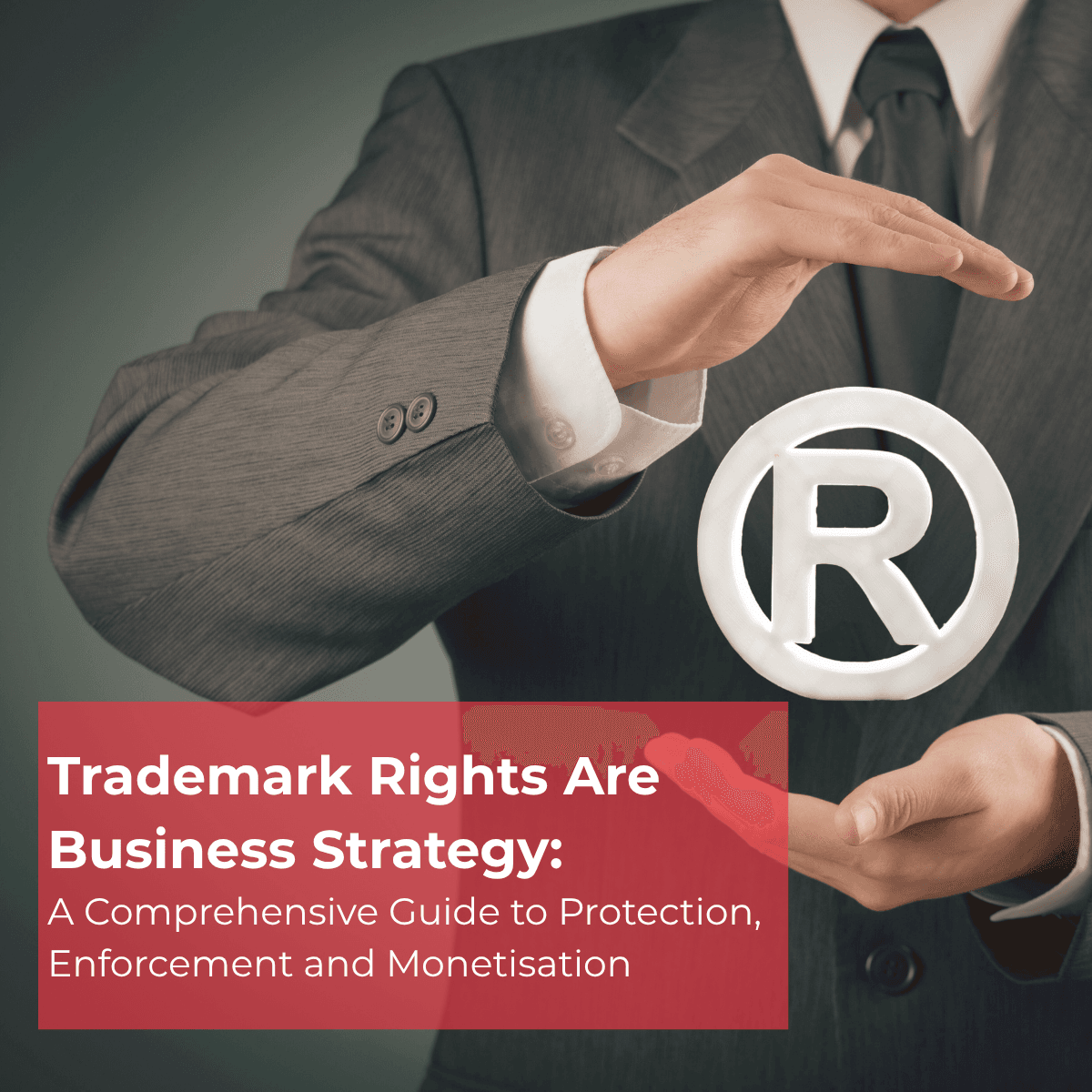
E. Kerim Yardımcı
Senior Partner
Trademark Rights Are Business Strategy: A Comprehensive Guide to Protection, Enforcement and Monetisation
Trade marks
24 July 2025
7 mins
In a world where brand visibility shapes market dominance, trademark rights are no longer just legal safeguards — they are business strategy. This comprehensive guide offers legal and commercial decision-makers a full-spectrum framework to protect, enforce, and monetise trademark assets across global markets. Whether you are launching, expanding, licensing or defending a brand, the insights in this article will help turn intellectual property into sustained competitive advantage.
Executive summary: IP as a Strategic Investment
Intellectual property is not a cost — it is an investment.
This investment involves a complex and substantial budget. Maximising the value of trademark rights requires:
- Strategic balance
- Board-level oversight
- Long-term commercial vision
In today’s IP-driven economy, trademarks are no longer optional. They are boardroom business — and every legal strategy for brand protection should reflect that.
1. The Strategic Value of Intangible Assets
A company's assets can be divided into two categories: Tangible assets, such as buildings, machinery, cash, and office supplies; and intangible assets, which lack physical form and are the result of a company’s creative and innovative capacity.
Today, for many businesses, intangible assets have become more valuable than their tangible counterparts and represent a critical key to success. These assets form the foundation for enhancing a company’s overall market value.
As illustrated in Table 1 below, intangible assets accounted for only 17% of S&P 500 market value in 1975, rising sharply to 90% by 2020. This transformation highlights the growing importance of protecting IP as a business-critical investment and underscores the need for strategic intangible asset planning.
Year | Tangible Assets (%) | Intangible Assets (%) |
|---|---|---|
1975 | 83% | 17% |
1985 | 68% | 32% |
1995 | 32% | 68% |
2005 | 20% | 80% |
2015 | 16% | 84% |
2020 | 10% | 90% |
Table 1: Shift in Market Value Composition (1975–2020): Intangible assets now dominate S&P 500 valuations.
Source: Ocean Tomo Intangible Assets Market Value Study.
2. Trademark Rights and Business Value
Intellectual property provides legal protection, competitive advantages, and opportunities for revenue generation. Protecting innovations, brands, and creative assets enables continuous improvement and sustainable growth in competitive markets.
A well-structured IP strategy allows businesses to:
- Gain competitive advantage through trademarks
- Create new income streams
- Access financing more easily
- Attract investors and strategic partners
This reflects the growing relevance of IP as business investment and demonstrates how effective intellectual property management directly supports brand value creation.
3. Auditing IP: When and Why It Matters
When considering trademark rights, companies should conduct regular IP audits. These audits assess the IP assets a business owns and utilizes. During an audit, you can:
- Identify existing and potential intellectual property (IP) assets
- Detect the scope and gaps in protection
- Ensure ownership of IP assets that are strategically important
- Uncover unused assets that generate unnecessary costs
- Identify underutilized assets with monetization potential
- Assess third-party IP risks that may affect your business
This process, often referred to as IP due diligence, forms the foundation of a board-level IP strategy and helps reduce legal and financial exposure.
Five key moments when an IP audit becomes essential:
1. During strategic planning or restructuring
2. Before working with investors or lenders
3. Before acquisition or partnership
4. To reduce costs or generate revenue
5. For licensing or litigation
4. Building a Trademark Filing Strategy
Developing an international trademark strategy requires understanding business needs, evaluating risks, and complying with jurisdictional requirements.
General Criteria:
- Markets: Where products/services are sold or planned within 5 years
- Sales Alignment: Strategy fit with expansion goals
- Infringement Risks: Assess vulnerable regions
- Budget: Balance cost with strategic IP value
Trademark Search:
- Existing brand: Conduct global availability search
- New brand: Identify 5 candidates and conduct market-specific checks
- Final brand candidate: Perform jurisdiction-by-jurisdiction deep search to build a robust global trademark portfolio
Registration Methods:
- National Applications: Country-specific filings
- Regional Applications: e.g., EU Trade Mark (EUTM) via EUIPO
- Madrid Protocol: WIPO-managed international filings to streamline global coverage
5. Protecting What You’ve Built: Monitoring, Enforcement, and Budget
Trademark Enforcement:
- Regular Monitoring: Track potential infringement globally
- Action Plan: Cease-and-desist letters, legal action when necessary
Key Focus Areas:
1. Trademark application opposition
2. Market product/service surveillance
3. Proof-of-use collection to defend against cancellation and enable risk-based trademark enforcement
Anti-Counterfeiting Measures:
- Customs and Border Control: Prevent illicit imports
- Supplier Audits: Monitor risk in your value chain
- Market Surveillance: Software tools & physical inspections
Budgeting:
1. Trademark Search
2. Registration
3. Renewal
4. Opposition Actions
5. Legal Enforcement
6. Anti-Counterfeiting
7. Assignment & Licensing
These efforts should be coordinated within an IP protection strategy guided by legal and commercial objectives.
6. Commercialising IP: Assignment and Licensing
Monetisation Options:
- Assignment: Sell or transfer unused marks
- Licensing & Franchising: Enable third-party brand use
IP Assignment Process:
1. Written agreement
2. Official registration
3. Regulatory approval (if required)
Licensing Types:
- Exclusive
- Non-exclusive
- Term-limited
- Territorial
Benefits:
- Generate revenue
- Enable market expansion
- Share costs and risks
This section reflects the growing importance of IP commercialisation frameworks and how businesses can monetise intellectual property without relinquishing ownership.

Deriş Patent Building Kabataş, İstanbul
+90 212 252 6122
© 2025 Deriş. All rights reserved.
© Madde22. All rights reserved